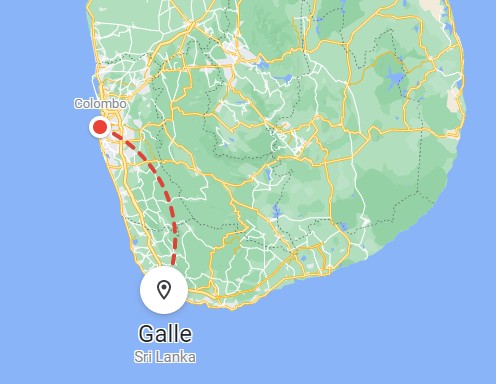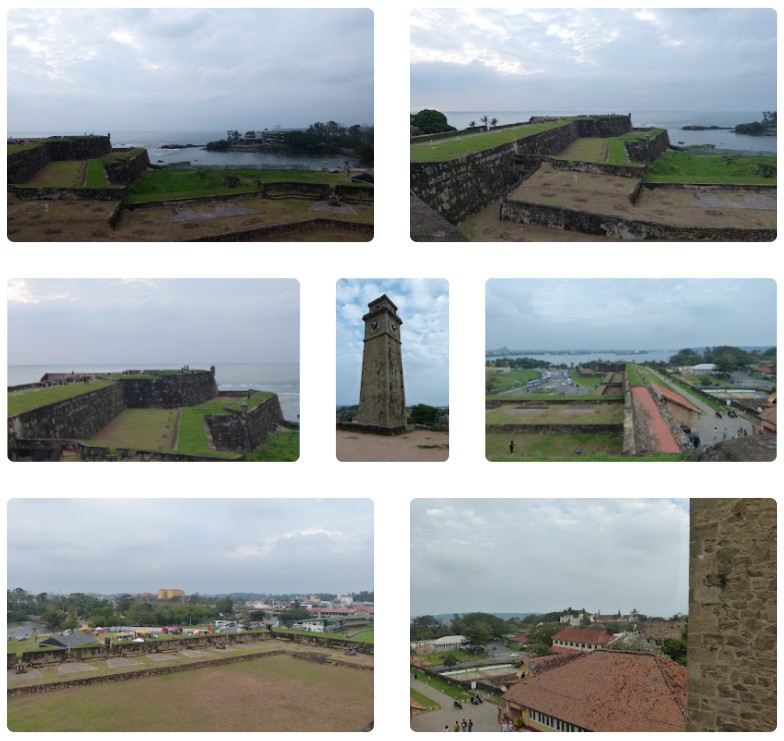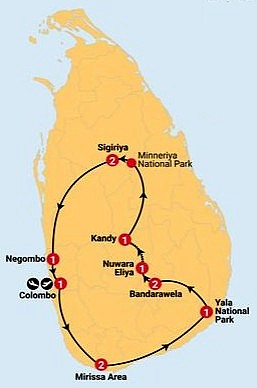Mirissa

We then continued around the coast to the enormous Calle Fort: begun by the Portuguese; taken by the Dutch East India Company; and then finally taken and made impregnable to further attack by the British East India Company. The British Company subsequently defeated the young successor to the warlike local monarch of Sigiriya, who had proven invulnerable to the Portuguese and Dutch.This ancient monarchy is now a matter of pride in Sri Lanka, as later pictures in this album of the palace ruins attest.

After the Indian Mutiny (1857), as a result of which a good deal of the shareholders assets were collaterally damaged, the East India Company was wound up (in 1874). Ceylon - like Burma and India, that then included Pakistan and Bangladesh, now fell directly under the Crown (Queen Victoria) and joined Canada, the colonies in Australia, New Zealand and South Africa as part of the British Empire. Victoria thus became an empress, equal in rank to her eldest daughter, Victoria, empress of Prussia.

